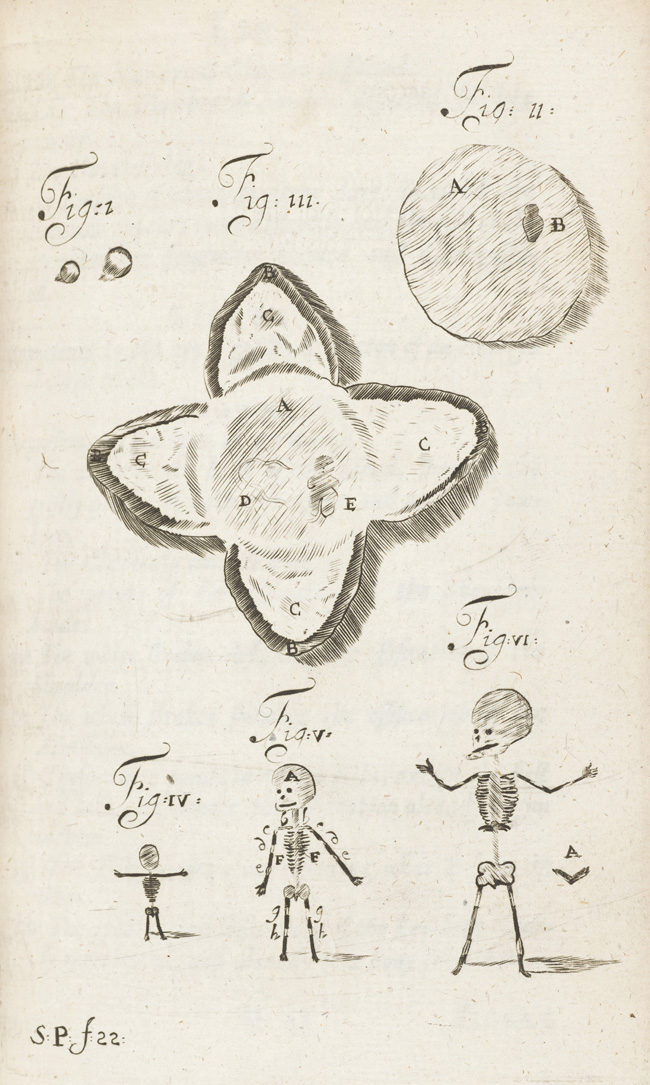Headfarm: Human eggs
D: Denkend versuchen wir uns auf ein Ei, eine Form, aus der alles stammt zurückzuführen.
M: Oder auf zwei, die zusammenkommen, wobei ein Drittes entstehen kann.

A preformationist ‘origin of man’. From The pardoxal (sic) discourse of F. M. Van Helmont, part 2, London: printed by J.C. and Freeman Collins for Robert Kettlewel, at the Hand and Scepter near St Dunstan’s Church in Fleetstreet, 1685, f. 22. 19 x 11.5 cm. Wellcome Library, London, Websource
The preformationist take on generation is vividly shown in this famous woodcut, first published in ‘A ground-plan of the origin of man’ (Anthropogeniae ichnographia) by the Dutch anatomist Thomas Kerckring in 1671. Here it is reprinted in a two-part discussion of the macrocosm and microcosm by the alchemist and physician Franciscs Mercurius Van Helmont. Embryos supposedly just a few weeks old are as fully-formed as children. Figure I shows ‘two humane eggs of different bigness’, figure II ‘an Embryo of three, or at the most four days after Conception’, and figure III ‘the Hepar uterynum [placenta] with the Veins and Arteries … dispersed through the substance of it’. Figure IV ‘represents to the eye a gristly Scheleton of an embryo of three weeks’, figure V ‘an Embryo of one month’, and figure VI, to the modern eye the diminutive skeleton of a child, ‘an Embryo of six weeks’.
